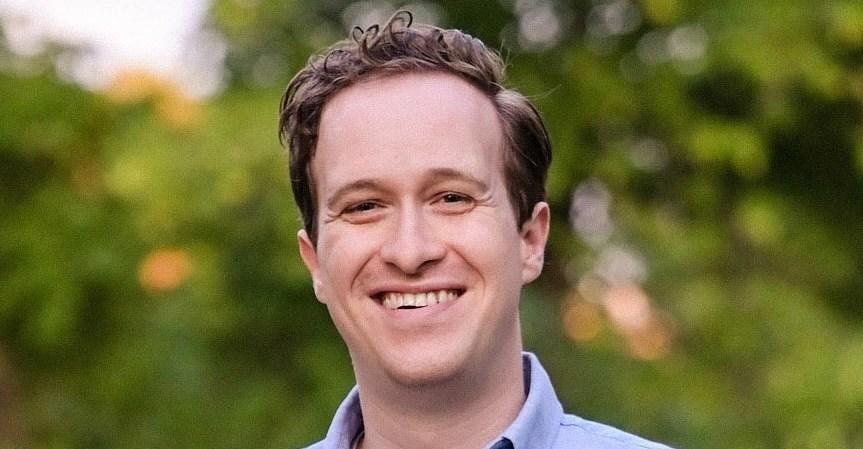Older people are spending their dying years behind bars. The problem is only getting worse.


In late 2018, Richard Washington sent a memo to the US Court of Appeals for the Ninth Circuit with the subject line “Notice I am being killed.”
The 64-year-old man, who decades earlier was convicted on armed robbery charges, was serving a 63-year prison sentence in Arizona. In his letter, he alleged that the Department of Corrections was refusing to give him medication for his various health issues, which included diabetes, hypertension, and hepatitis C. Because of the lack of treatment, Washington wrote, “My greatest fear is that I’m going to die more sooner than later.”
About six weeks later, he was dead.
In state after state, prison systems have long been plagued by inadequate health care, resulting in the spread of treatable diseases and, in many cases, preventable deaths behind bars. But a key demographic trend threatens to make that problem even worse: Over the last several decades, America’s prison population has been rapidly aging, and, as in Washington’s case, prisoners’ health needs have become more significant as a result.
People who were 55 years old or older made up about 3 percent of the US prison population in 1991; by 2021, they accounted for 15 percent. The total number of older prisoners is also steadily growing, with no signs of abatement: In 2020, there were about 166,000 incarcerated people aged 55 years or older; that number grew to about 178,000 in 2021 and 186,000 in 2022.
The graying of America’s incarcerated population is effectively turning the US prison system into a de facto nursing home, leaving hundreds of thousands of older people in its care each year. The result is skyrocketing costs: The Bureau of Prisons’ health care spending on federal inmates rose from $978 million in 2009 to $1.34 billion in 2016, and various state governments have seen similar increases.
Still, conditions in American prisons continue to be detrimental to people’s health and often lead to accelerated aging. Prisoners, for example, are much more likely to exhibit signs of cognitive decline, including dementia, at an earlier age than the general population, and one study found that a 59-year-old in prison has the same morbidity rate — that is, how often people get a disease — as a nonincarcerated 75-year-old.
“We have facilities that aren’t considered humane,” said Lauren-Brooke Eisen, a senior director at the Brennan Center for Justice. “They’re not places for elderly people who have dementia and diabetes and maybe walkers or wheelchairs.”
All of this raises both a moral and practical policy question that lawmakers have to face: Why are we forcing older people to spend their dying years in prison when they can get better care elsewhere?
People aren’t just aging behind bars; police are locking up the elderly
One of the explanations for the aging prison population is simple: Since the 1970s and the age of mass incarceration — when the American prison population ballooned and gave the United States the distinction of imprisoning more people than any other country in the world — people have been aging behind bars.
The other explanation, however, is less obvious: Older people have been getting arrested at higher rates than they used to. In 1991, for example, people who were 55 years of age or older made up only 2 percent of adults who were arrested; by 2021, they made up 8 percent, according to the Prison Policy Initiative, a Massachusetts-based nonprofit that does criminal justice research and advocacy. The Marshall Project also found a similar pattern: Between 2000 and 2020, there was nearly a 30 percent increase in the number of arrests of people over 65, despite the overall number of arrests dropping by nearly 40 percent.
That spike is especially surprising because people tend to age out of crime: Recidivism rates for older people are significantly lower than they are for younger people. According to a 2017 report by the United States Sentencing Commission that tracked people for eight years after they were released from prison, nearly 68 percent of people who were under 21 at the time of their release were rearrested. By contrast, just over 13 percent of people over 65 were rearrested.
So why are arrests among older people suddenly on the rise? The resurging trend across many American cities and states to further criminalize poverty and impose harsher punishments for petty crimes, including things like shoplifting, is partly to blame because the groups of people who become common targets for police are getting older.
“People who are unhoused and people suffering from mental health disorders and substance use disorders are also aging,” said Mike Wessler, the communications director at the Prison Policy Initiative. “If you look across the country right now, we’re obviously seeing efforts to ramp up policing of people who are unhoused, people with untreated mental health disorders, people with substance use disorder. So it’s almost a certainty that in the coming years we are probably going to see this problem get worse.”
People experiencing cognitive decline, including those suffering from dementia, can also be especially vulnerable during interactions with police. Henry Hart, a 76-year-old with dementia in Maryland, for example, was arrested when he had what his daughter described as a mental breakdown. During the incident, Hart had grown agitated and hit her, and when she called for paramedics to take him to the hospital, police showed up at the scene instead. Officers ultimately arrested him for assault despite his family members’ pleas. After spending time in jail, Hart’s condition seemed to get notably worse, according to his daughter.
“As Maryland’s population ages, experts fear that police will encounter people with dementia more often and without recognizing the condition or knowing how to respond to it,” Baltimore Sun reporters Angela Roberts and Cassidy Jensen wrote. “Arrest or jail time can be especially harmful to people with dementia, given their mental and physical vulnerability, experts say.”
There’s also evidence that beefing up law enforcement has had a negative impact on older people. While younger people have become less likely to be arrested for drug-related crimes than in the past, arrests of older people for drug-related offenses have spiked. Between 2000 and 2018, for example, drug-related arrests of people over the age of 50 rose by 92 percent — the fastest increase out of any age group. And while substance use disorder among older people is on the rise, addressing the problem through stricter law enforcement is not a practical solution.
“It’s a heck of a lot easier to order the National Guard to go stand on subway platforms than it is to figure out how to expand mental health treatment in the state; than to figure out how to address substance use disorders in the state; than to figure out how to address the housing crisis in the state,” Wessler said.
The consequences of an aging prison population
Studies have shown that incarcerated people have signs of aging at a faster rate than others as a result of prison conditions, and that each year in prison can shave years off of someone’s life.
“Health care behind bars is bad even in the best scenarios,” Wessler said. “And that’s kind of by design in a lot of respects: Prisons are not places that are therapeutic or designed to heal; they are places that are designed to punish.”
Infectious diseases tend to disproportionately affect prisoners compared to the general population, and the Covid pandemic in particular showed why prisons are especially dangerous for older people. Deaths of inmates rose by nearly 50 percent in the first year of the pandemic, and while mortality rates increased for prisoners across all ages, older people saw the highest surge in mortality. By contrast, among the general population, it was younger people who saw the highest increase in death rates.
From a public policy standpoint, the aging prison population is a failure on multiple fronts. Most importantly, prisons cause people to age more quickly and die prematurely. After all, while so-called “natural” deaths — that is, death from disease or old age — make up the vast majority of deaths behind bars, they often receive little scrutiny despite the fact that many of them have been found to be the result of medical neglect.
But it’s also costing states a lot of money — money that is clearly not well spent. In Texas, for example, the state’s prison health care costs increased by more than $250 million between 2012 and 2019, although the prison population actually decreased by 3 percent during that time. The state’s prison population aged 55 or older, on the other hand, had increased by 65 percent during that same period, according to data reviewed by the Texas Tribune.
Some lawmakers have noted this is unsustainable. As former state Sen. John Whitmire told the Tribune, “Nobody’s tougher on crime than me, but once you’ve incarcerated a guy past the point that he’s a threat to anybody, I’d like to save that $500,000 to put him in a nursing home as a condition of parole, take that money, and spend it on either other public safety efforts or prison costs.”
The system as it is, in other words, isn’t benefiting anyone. It’s both deadlier and more financially costly.
And from a moral standpoint, it’s hard for a society to defend these outcomes. “Do we morally think that it is good to have people spend their dying years behind bars, especially for drug crimes from the ’80s and ’90s?” Wessler said. “That strikes me as morally wrong in addition to being bad public policy.”
Tougher penalties turn into de facto death sentences
In many ways, America’s aging prisons are the expected end result of the tough-on-crime approaches and surge in arrests of the 1980s and 1990s.
A study by researchers at the the State University of New York at Albany, the University of Pennsylvania, and the RAND Corporation, found that young people who were locked up in the 1990s spent more time behind bars than any other generation, in large part because of tougher and longer sentences, higher recidivism rates, and escalating punishments for people who are rearrested. And that generation is now aging behind bars, unlikely to ever come out of prison.
“These extreme sentence lengths paired with narrow release mechanisms — meaning fewer ways to actually leave the system — led to this huge crisis of older adults in American prisons,” Eisen, from the Brennan Center, said. “Because what you had is more people coming in, people staying for longer, and then fewer avenues for release because of mandatory minimums, because of three strikes [laws], because of life without parole.”
While many older people in prison today are being sent there for petty crimes, it’s also true that many others, particularly those serving longer sentences, have been convicted of serious crimes. But regardless of what a person is guilty of, the fate of a death behind bars — which can be the result of inadequate medical care and botched treatments — could itself be seen as a cruel punishment, especially when people no longer pose a threat to society.
Take, for example, the case of Walter Jordan, another elderly Arizona prisoner whose story is eerily similar to Richard Washington’s. Jordan, a 67-year-old man who was convicted of first-degree murder and kidnapping, was serving a life sentence. In a memo he wrote to a federal judge in 2017, he alleged that the state’s Department of Corrections and its private health care contractor had delayed his treatment for skin cancer. The memo was, in his words, a “notice of impending death.”
Jordan wrote that he was in pain and suffering from memory loss. He alleged that other prisoners were also being denied care, and he wrote that as a result of his delayed treatment, he would be “lucky to be alive for 30 days.”
Jordan was right: Just over a week later, he was dead. A physician who reviewed his case found that Jordan could have survived had he received adequate care. The situation was “horrific,” the physician wrote. “He suffered excruciating needless pain from cancer that was not appropriately managed in the months prior to his death.”
There are more humane approaches. States and the federal government can start, for example, by expanding eligibility for compassionate release, which truncates sentences but tends to be reserved for people with terminal illnesses. Parole — which can sometimes have unintended consequences including strict rules that often result in parolees being sent back to prison — can also be especially beneficial to elderly prisoners who can get better health care outside of prison. And yet, tough-on-crime laws like those recently passed in Louisiana are making it harder for prisoners to be eligible for parole.
Governors can also make use of their pardon powers and commute sentences for older prisoners who have shown signs of rehabilitation. And instead of readopting a tough-on-crime approach that will likely result in more arrests of older people, states and the federal government can support social safety net programs that would lift older people out of poverty and homelessness, reducing their odds of being arrested in the first place.
America’s jail and prison population peaked in 2008, when more than 2.3 million people were behind bars. And while it has mostly declined since then — especially during Covid, when many prisoners were released as the virus ravaged prisons — it has recently been ticking back up.
“We have far too many people in our prisons,” Eisen said. One of the fastest ways to address that problem is to release older people, who generally don’t pose a public safety risk. “This is a population that shouldn’t be behind bars.”
But until lawmakers acknowledge that the current prison system is failing some of the most vulnerable people in its care, cases like Washington’s or Jordan’s will become all the more common. And more and more people who are now serving time in an American prison will slowly come to learn that their punishment has morphed into a death sentence.

AI ‘creators’ might just crash the influencer economy
- 7 hours ago

President confers Nishan-e-Pakistan on Indonesian President
- 13 hours ago

The Verge subscription turns one
- 7 hours ago

Betting scandals broke sports. Could prediction markets do the same to politics?
- 5 hours ago

OpenAI says it’s disabled ad-like app promotions in ChatGPT
- 7 hours ago

Govt does not believe in using NAB for political vendetta: PM Shehbaz
- 15 hours ago

Skateboarding is better in hell
- 7 hours ago

Manafaingana ny famonjenan’ireo tanalahy mampalaza an’i Madagasikara ireo manam-pahaizana satria efa mitatao ny afo.
- 5 hours ago

Genki’s colorful, powerful power strip is 25 percent off
- 7 hours ago

Analogue is restocking its 4K N64 and making it more colorful
- 7 hours ago

How the Supreme Court is using Trump to grab more power for itself
- 5 hours ago

Traditional gender roles won’t get men what they want
- 5 hours ago





